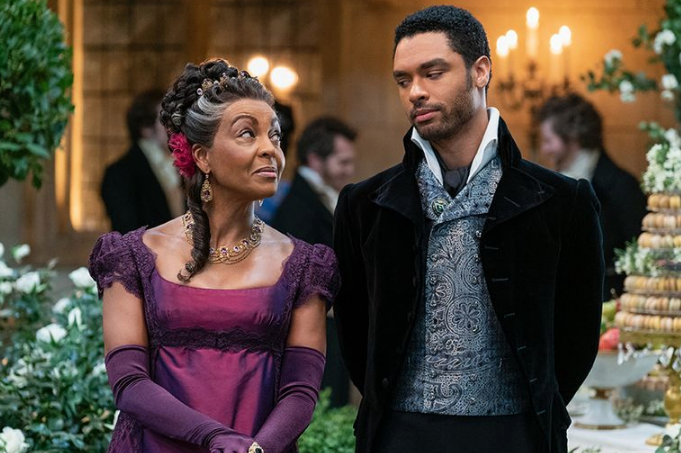
The screen belongs to white people. This is something I’ve always known, something I’ve been taught all my life. Representation, then, is an act of charity. The romantic interests of 2000s TV shows and movies are white. White is the blueprint, to be sought after. White is like gold. I am like copper.
Over time, the screen’s indoctrination becomes subtle and, dreadfully, deniable. There are more black people on the screen, but white directors neutralize them with white people. Black characters in love are scarcely shown, for we are the comic relief. When we get the opportunity, we are again paired with white people. From television to my peers, I come to understand that a white person should be the goal of my romantic endeavors. For my direct opposite to find me alluring, I should be honored. If they notice me. If they speak to me. If they want me, whom they weren’t taught to. Only this could raise my value, and lower my intensity, as black people are only seen as soft when they cater to white people. And so I wait.
We transition into the era of colorblind inclusion, wherein people of color, especially black people, are stripped of their culture, experiences, and identities, and left to represent their communities simply by being on the screen. In addition, black actors are often cast as the bad influence, the crotchety skeptic, or the overenthusiastic simpleton. The most recent depiction I have seen of colorblind inclusion is the hit Netflix TV series, Bridgerton.
In this whimsical portrayal of Regency era high society, black people are sprinkled sparingly throughout the scenes like a garnish, meant to bring color to an otherwise monochrome casting. There are five predominant black characters: Queen Charlotte, Lady Danbury, Simon Bassett, Marina Thompson, and Will Mondrich. Three of these characters are played by lightskin actors, including the primary love interest, Simon, who is shown as a bad influence on the meek and innocent (and bright white) main character, Daphne Bridgerton. Aside from Simon, these characters exist on a one dimensional plane—that is to say, they’re supporting characters without substantial backstories and/or insignificant tools of the plot. Race is only acknowledged once in the story, when Lady Danbury speaks to Simon, explaining that the power of love, specifically the romance between Queen Charlotte and King George III, eradicated racism.
It would be acceptable to question why any of this matters at all. Why, one might ask, should a non-black director be forced to not only hire black actors, but deliberately acknowledge their blackness in the story? I would reason that colorblind casting is not my issue. Although I do agree with Regé-Jean Page, who stated in an interview for the New York Times, “There’s a difference between showing brown skin onscreen and representing brown people onscreen,” I will never expect the latter from media that is cultivated for white people. I know better by now. Bridgerton, however, is an example of a show that claimed to incorporate race into the story.
One might also wonder if this is an imperfect example of colorblind inclusion, as race is mentioned. I would explain, dramatically, that despite the writers pulling their grimy fingers out of their ears for two seconds to just barely hear black people say they need to be represented in the story, a sappy line pandering to white saviors does nothing for us. Not to mention that such a line had no grounding in the actual storyline; as Kathleen Newman-Bremang explained in a discussion for Refinery29’s Unbothered sub-brand:
“It felt really against what they were giving us for the rest of the show, which was that race doesn’t exist in this world. […] The fact that this scene is there, and that the showrunner says he wanted to make race a part of this world though he absolutely did not is frustrating. It felt like they gave a little tease just to say that they did it. If the writers read this, they might be like, “But we did acknowledge it!””
To sum up my thoughts, the neutralization of black characters through partnerships (platonic, romantic, or sexual) with white characters would not be concerning if it weren’t the default, implying that black love is too intense for general audiences. Overall, colorblind inclusion is performative, and assures white people that they will not have to stomach the intricacies of black identities, only their faces on the screen. It teaches black people that our identities must be watered-down or silenced entirely in order to be digestible. Nevertheless, we are not curated for white people. If we are not seen in our entirety, we are not seen at all.
Bibliography
1. Jacobs, Julia. “With ‘Bridgerton,’ Scandal Comes To Regency England”. Nytimes.Com, 2021, https://www.nytimes.com/2020/12/18/arts/television/bridgerton-netflix-shonda-rhimes.html?smtyp=cur&smid=tw-nytimes. Accessed 20 Feb 2021.2. Komonibo, Ineye, and Kathleen Newman-Bremang. “Does Netflix’s Bridgerton Have A Race Problem?”. Refinery29.Com, 2021, https://www.refinery29.com/en-us/2020/12/10240235/bridgerton-review-blackness-representation. Accessed 20 Feb 2021.
